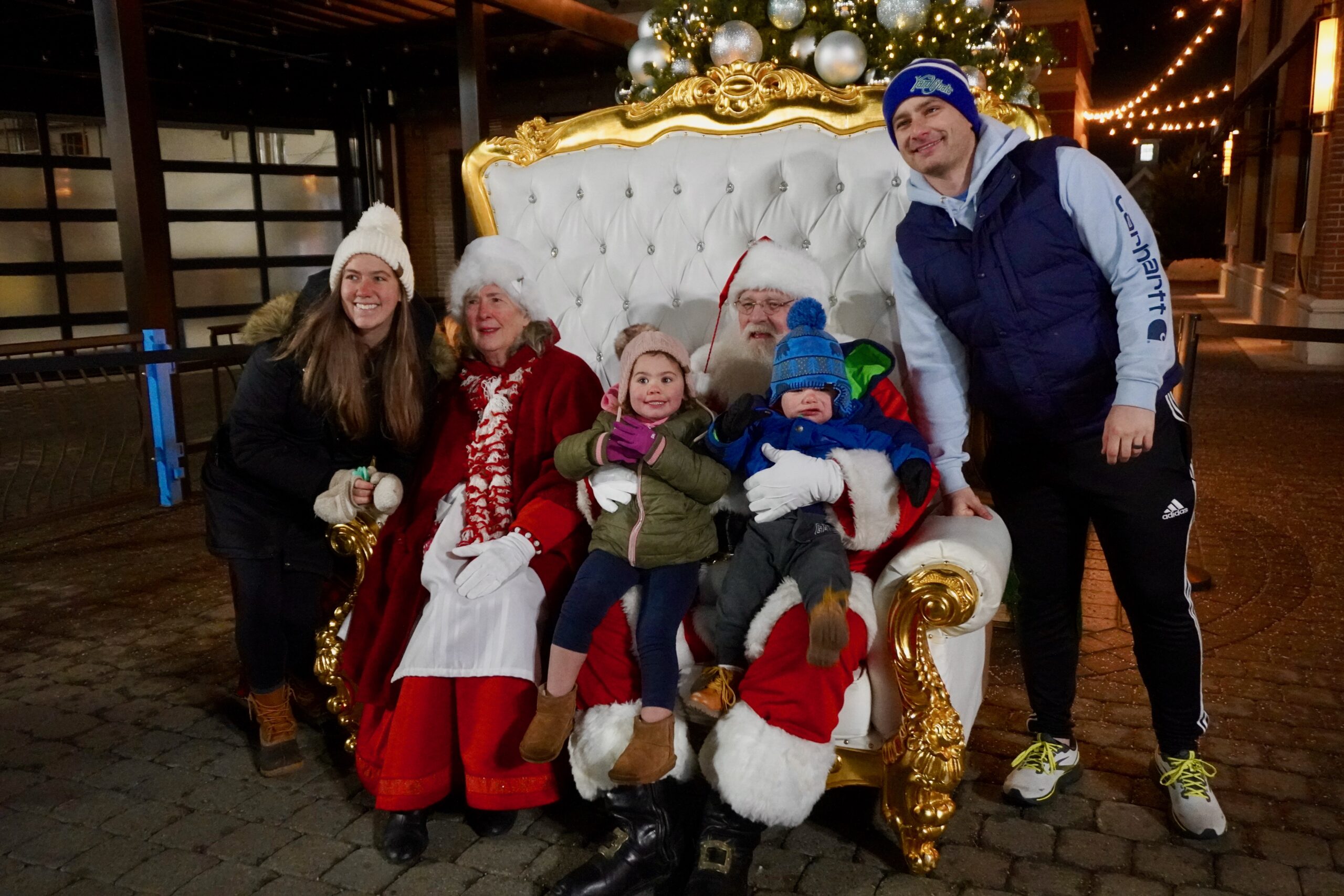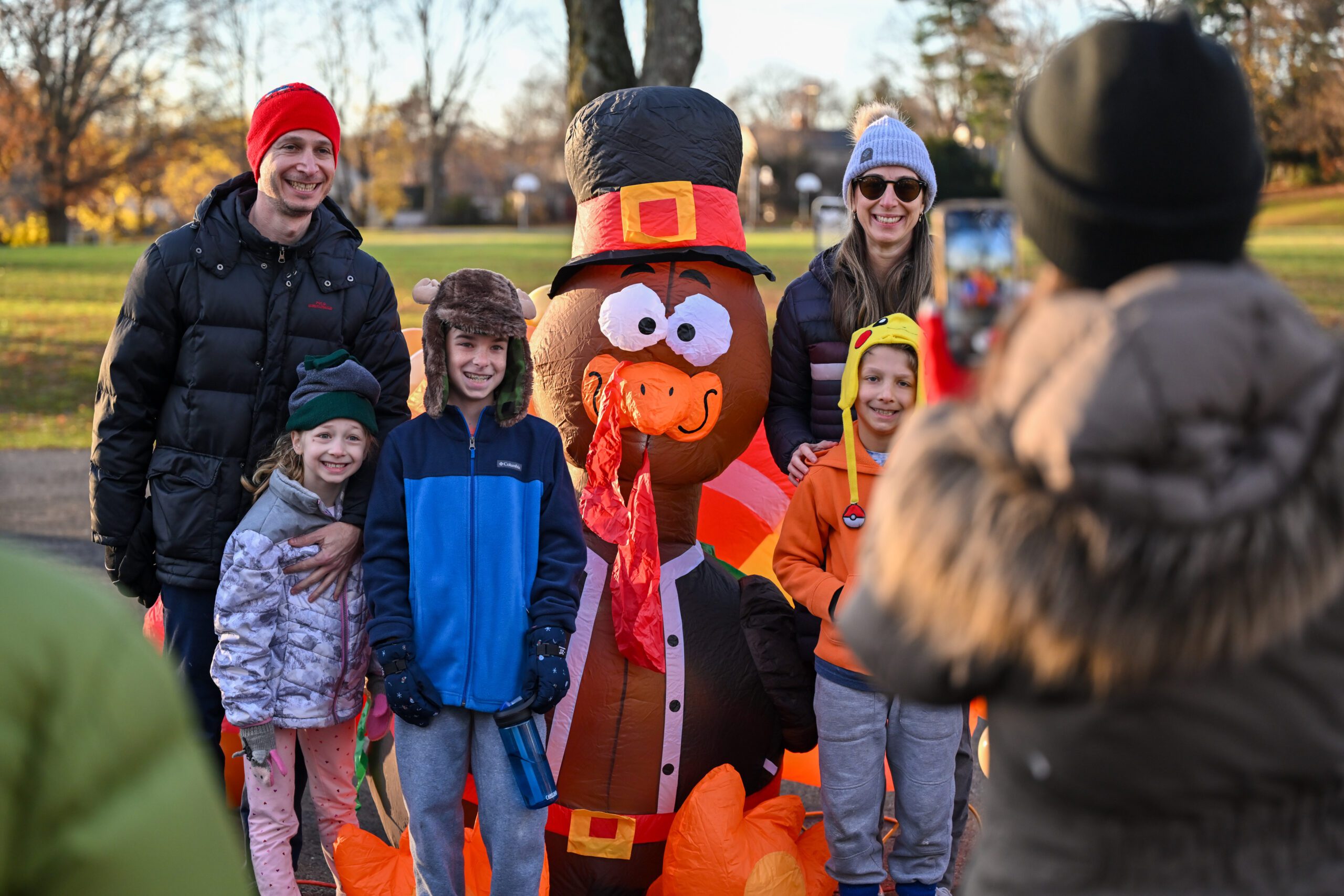From the West Hartford Archives: Congregational Church Parsonage

Audio By Carbonatix
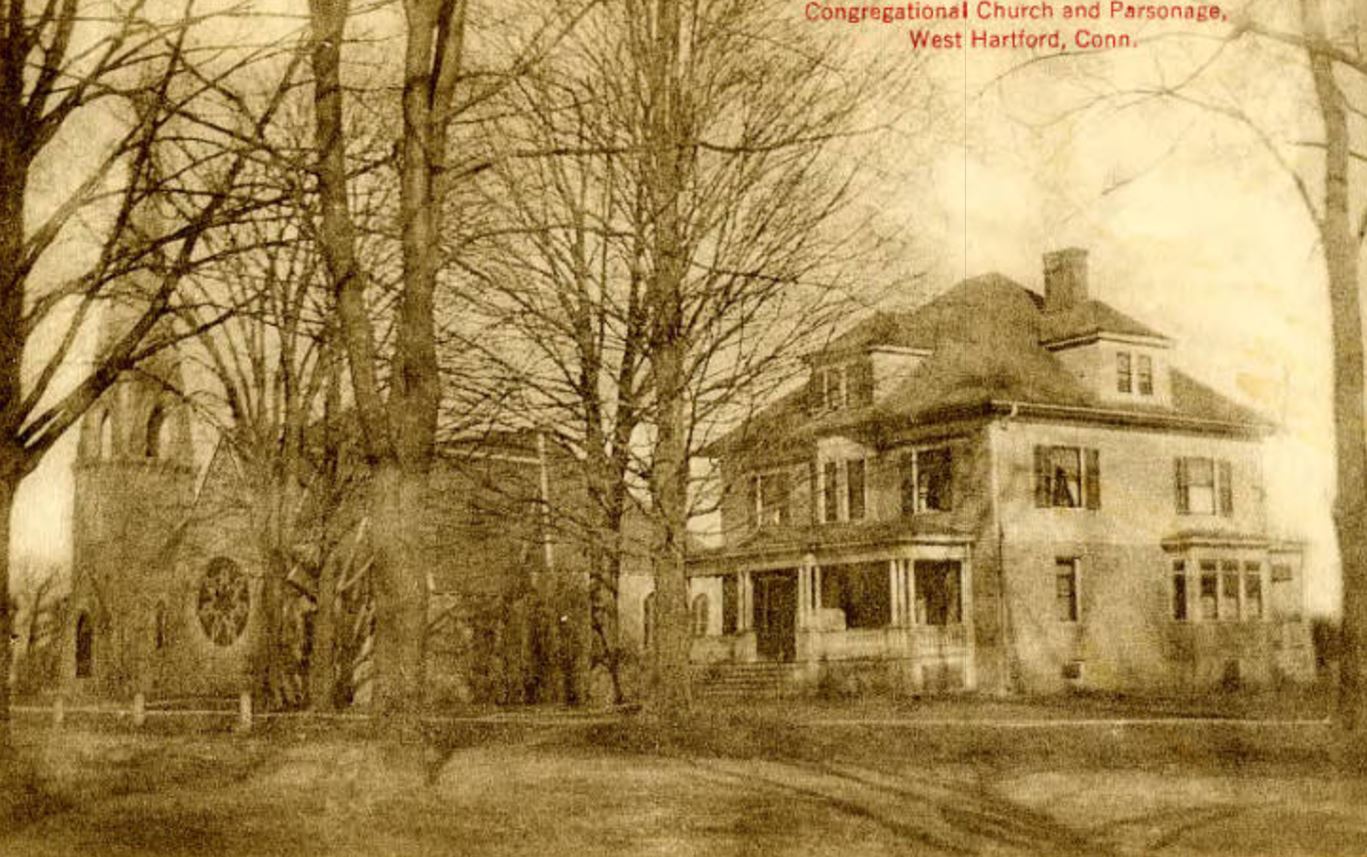
The Congregational Church parsonage was built in 1901. Photo courtesy of Noah Webster House & West Hartford Historical Society
Historian Jeff Murray takes a look into West Hartford’s past to uncover some surprising information, stir up some memories, or reflect on how much life has changed – or hasn’t changed at all. Enjoy this week’s ‘From West Hartford’s Archives’ …
By Jeff Murray
This is a photo of the Congregational Church parsonage, built in 1901, at the southeast corner of Main Street and Farmington Avenue. Congregational churches in early America, especially in Puritan-founded New England, were central to town life. The church and minister were supported by the town and a parsonage house was typically provided by the community as part of his compensation.
Churches maintained parsonages, seeing them as essential for stability in turnover from one pastor to another. They were integral parts of the spiritual backbone of West Hartford, too. It reduced the pastor’s financial burden, gave them better accessibility to the community, and provided them an easy way to immediately assimilate into the town they had moved to.
After World War II, many pastors began preferring to own their own homes for equity and personal autonomy as attitudes changed. Today, many churches no longer have separate parsonages they maintain as the relationship between pastor and church has changed over time.
The previous parsonage, which was built in 1838, had witnessed many early pastors, including Edward Andrews (1837-1840), George Wood (1841-1844), Dwight Seward (1845-1850). The older parsonage was built in an era that was bookended by two powerhouses: Nathan Perkins and Myron Morris. Reverend Perkins (the Congregational Church’s third pastor, from 1772 to 1838) had overseen the education of Noah Webster, the developer of the American Dictionary, and served during the American Revolution.
In fact, Rev. Perkins’ time in West Hartford was surprisingly long – he lived to 99 and was minister for 66 years. He was influential in moral leadership in West Hartford and would have overseen the evolution of the religious revival in the early 1800s, especially with the emergence of moral movements like temperance and abolitionism. He was witness to monumental shifts in America: colonial theocracy to democratic, voluntary religion. And while there was only one house of worship in town by the time he died, it was less than 20 years until the creation of the Baptist Church and St. James’s Church across the street.
His two successors, Caleb Henry and Edward Andrews, were his colleagues through his final years; Perkins retained his position as pastor while serving along with the former two. Rev. Perkins lived in a house not far from the church on the west side of South Main Street, but when he died in 1838, a new parsonage was built across the street.
At the other end of a series of short-term pastors, Rev. Myron N. Morris was installed on July 1, 1852, coming from North Stonington. He served for 23 years and oversaw two important events – the independence of West Hartford from Hartford in 1854 and the American Civil War. While living in the old parsonage, he had to navigate the challenges of a brand new town, the relationship of its people with the people of Hartford, and then the fracturing of this community during wartime, in which young men shipped off without an expectation to return.
While still pastor, he was elected the town’s representative to the Connecticut General Assembly in 1872. He retired in 1875 and was succeeded by Franklin Hatch. When Morris died in 1885, his home (not the parsonage) on North Main Street went to his wife and four children. In 40 years, his granddaughter Susie Butler owned the majority of the land in West Hartford Center.
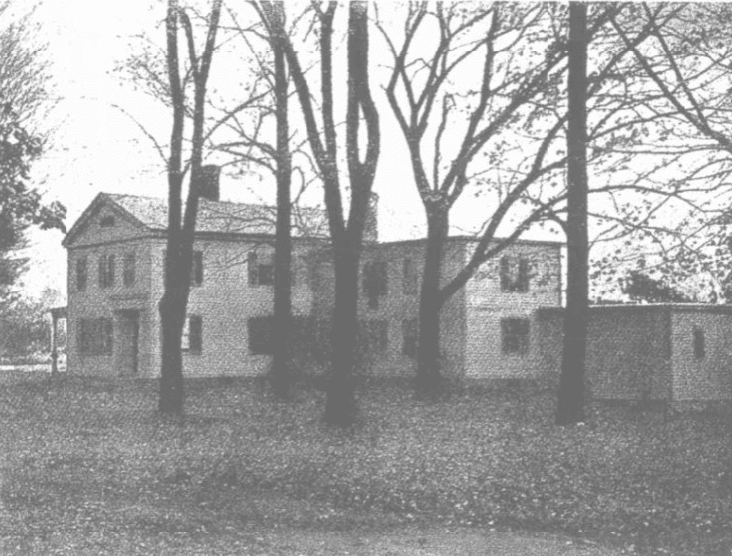
Parsonage built in 1838, torn down in 1899. Photo courtesy of Noah Webster House & West Hartford Historical Society.
In the early 1880s, there was talk of building a new church across the street from the old one. For nearly 50 years, the Congregational Church had been in a columned building on the northwest corner (now the Veterans Memorial), but there was a proposal by the church to build a brand new one next to the parsonage on the southeast corner. In 1882, a Gothic Revival church was constructed on this corner. This style reflected the fashion of the Victorian era: romantic, historical, and spiritually uplifting.
The Gothic style looked to imitate the spiritual grandeur and tradition of European cathedrals, admired by Americans in the late 1800s as the relationship with France and Catholic Europe deepened. Tall spires and giant stained glass windows, as seen in the featured photo, were meant to lift the eyes and the soul toward heaven. It was also a transition of attitude from the older colonial style church of days past. Pastors who lived next door to the church held receptions at their home and picnics in the backyard.
By the 1890s though, the parsonage was in need of rework. The church voted in 1895 to simply repair the home, but not rebuild. This would not last long. In 1898, a town meeting came to the conclusion that the old parsonage should be removed and a new one built.
In the fall of 1898, work began on removing the parsonage. The ell part of the house was sliced off and sold to a Hartford plumber and moved to Meadowbrook Road for a house he was having built for himself (evidence points to this being 98/100 Meadowbrook Road, but consensus today is not 100% clear). In the meantime, the parsonage was altered to accommodate Rev. Thomas Hodgdon, who threw a housewarming party in February 1899.
Rev. Hodgdon was another powerhouse in West Hartford’s religious life. He served in the role from 1891 to 1926, a significant period of development. He endorsed many of the improvements to West Hartford’s infrastructure at a time when building was fast and expansive. Three years after he came to town, electric trolley cars were flying by on Farmington Avenue and suburban developments were being carved out of hillsides and meadowland. During his time here, he witnessed much of our modern infrastructure come to fruition: water to every house, fire and police departments, sewer facilities, and electric lights.
The Progressive Era reforms were in full swing. His wife Jennie played central roles to several organizations connected to the church, served on advisory boards for the Daughters of the American Revolution, and formed a women’s literary club, which held meetings at the parsonage in the late 1890s.
In the summer of 1900, work started on replacing the parsonage with a new building, just north of the old one. The annual October bazaar, held at the church, directed a significant amount of the funds raised to the parsonage costs. Some funds were borrowed by the church to complete it and do additional repairs on the church spire.
The parsonage was made partly from granite in harmony with the adjoining church, and opened in October 1901. The older parsonage, rather than being immediately removed, was instead refurbished and rented out. In order to pay down the debt, the next few years of markets at the church raised hundreds of dollars (for example, the bazaar in 1902 generated net proceeds of $713.73, put toward the parsonage construction).
This new house was more suitable for the meetings of organizations connected with the church, like the Junior Auxiliary, the Mission Study Class, Boy Scouts, church socials, and even weddings. In 1917, the church voted to build a garage for the parsonage because Rev. Hodgdon had come into possession of an automobile. During World War I, members of the Women’s Literary Club met in the parsonage all day for sewing for the Belgian Relief Fund, especially after the outbreak in 1914.
In the late 1920s, the West Hartford Police rented the older parsonage to the south of the pastor’s house and moved their headquarters from the basement of the town building due to a lack of space. The town was also not complying with the law by keeping prisoners in that basement, so the town had to take action to secure a new location.
Rev. Hodgdon was also the Protestant backbone in West Hartford during World War I, which was deeply personal to him. His son Manning had enlisted in the U.S. Navy while at Dartmouth and served on the North Sea, spectating German fleets. He was transferred to the USS Nahma, a converted yacht used as a patrol vessel, in January 1918 as part of naval operations in the Black Sea region. He was headed toward Ukraine and was heavily involved in the chaotic collapse of the Eastern Front following Russia’s withdrawal after the Bolshevik Revolution in late 1917.
In 1919, the Russian Civil War was raging between the Bolsheviks (Reds) and their opponents, including monarchists, liberals, and foreign powers (Whites). As the Bolsheviks advanced southward through Ukraine, the Crimean port of Sevastopol became a critical evacuation point. Manning Hodgdon was involved in the evacuation of civilians, information that was relayed through the Hartford Courant and to the Hodgdon family.
Seven years later, Rev. Hodgdon retired and was bestowed the title of pastor emeritus for his long term, faithful service to this town. He moved to Florida, where he died in 1949.
By the late 1930s, the church once again was expanding beyond its existing building and plans were drawn up for a new sanctuary parish house, and chapel. Construction of the current parish house began in 1940 in the rear of the parsonage, which required its demolition, especially to open up the front. The parsonage and a large frame house next to the public library branch were torn down in the summer of 1940. The parish house was completed by the following year.
For less than a few months, both the old church and the new parish house existed together. However, at 1:15 am on January 3, 1942, a fire started in the boiler room of the church on the corner, which gutted the entire building in the middle of the night. Construction of a new meetinghouse couldn’t make much progress during World War II due to material shortages, but work went ahead in June 1946. Within a few months, the spire was placed atop the church.
Dedication services were held on September 21, 1947. Both the church and the parsonage underwent several changes in their long history, but each stage of their evolution reflected the history of West Hartford.
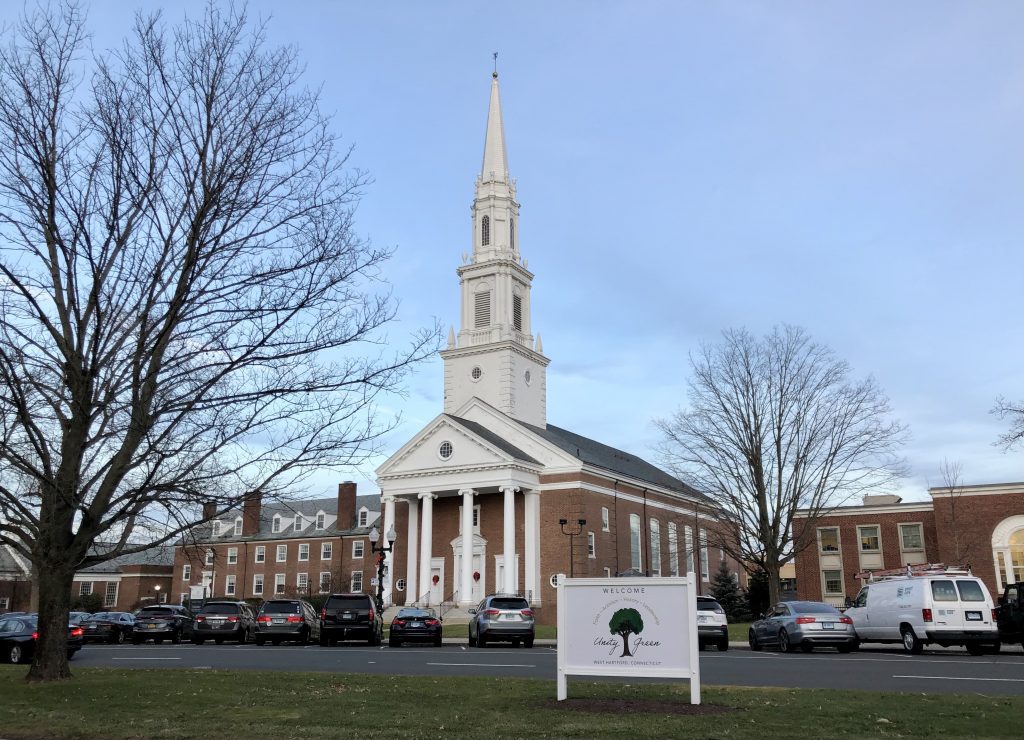
First Church West Hartford. Photo credit: Ronni Newton (we-ha.com file photo)
Jeff Murray was born and raised in West Hartford and has been involved with the Noah Webster House & West Hartford Historical Society since 2011 when he was a high school student and won the Meyer Prize for his essay on local history. Jeff routinely volunteers as local history researcher uncovering information for numerous museum programs such as the West Hartford House Tour and West Hartford Hauntings. Jeff works as a data analyst at Pratt & Whitney.
Like what you see here? Click here to subscribe to We-Ha’s newsletter so you’ll always be in the know about what’s happening in West Hartford! Click the blue button below to become a supporter of We-Ha.com and our efforts to continue producing quality journalism.


